Gestalt Language Processing: Complete Guide For K–12 SLPs
If you’ve been hearing more about Gestalt Language Processing (GLP) lately, you’re not alone! Whether you’re brand new to the concept or you’re already supporting gestalt language processors on your caseload, this guide is here to walk you through everything you need to know.
We’ve pulled together our favorite resources and podcast episodes into one easy-to-navigate hub, so you can explore topics like:
- The different stages of GLP
- Writing IEP goals for gestalt language processors
- Collecting meaningful data
- Supporting AAC users who process language gestalty …and more!
Each section below links out to a deeper dive, so you can bookmark what’s most relevant to you and revisit it when you need a refresher.
Ready to get started? Let’s break it down—starting with the basics.
What is Gestalt Language Processing?
Gestalt Language Processing (GLP) is a natural way of developing language—just not the way most speech therapy textbooks teach it.
Instead of starting with single words and building up, gestalt language processors begin by learning whole chunks or scripts of language (think: “Let’s go!” or lines from favorite shows). These chunks are called gestalts. Over time, with the right support, children break these down into smaller parts and eventually build flexible, original sentences.
So instead of going from “cookie” ➝ “want cookie” ➝ “I want a cookie,” a gestalt processor might go from “I want a cookie now!” ➝ “cookie now!” ➝ “cookie”—and then work their way back up again in their own unique way.
This is very different from analytic language processing (which is the typical word-by-word route). And understanding that difference is key to supporting these learners effectively.
“Analytic language processors are referred to as ‘word babies’. Gestalt language processors are known as ‘intonation babies’.”
– Jessica Teixeira, M.S., CCC-SLP
Want a deeper dive into how it all works? Check out our full podcast episode on The Journey to Understanding GLP with Jessica Teixeira.
Understanding Gestalt Language Processing Stages
Gestalt Language Processing (GLP) unfolds in distinct stages, each marking a pivotal point in a child’s language development journey. Recognizing these stages enables us to tailor our support effectively, meeting each child where they are.
Stage 1: Delayed Echolalia (Whole Gestalts)
Children use entire phrases or scripts they’ve heard before, often tied to specific contexts or emotions. For example, a child might say, “Time to clean up!” after hearing it during classroom transitions.
Stage 2: Mitigated Gestalts (Partial Gestalts)
Children begin modifying or combining parts of these scripts. They might shorten “Time to clean up!” to “Clean up!” or mix it with another phrase.
Stage 3: Single Words and Two-Word Combinations
At this stage, children start isolating single words from their gestalts and using them flexibly. They may say “Clean” or combine words like “Want toy.”
Stage 4: Original Phrases and Simple Sentences
Children create novel phrases and simple sentences using their vocabulary, such as “I want toy.”
Stages 5 and 6: Complex Sentences and Advanced Language
Language becomes more complex and grammatically advanced, with children forming sentences like “I want to play with the toy after lunch.”
Understanding these stages allows us to provide appropriate interventions and support at each level.
As Marge Blanc, M.A., CCC-SLP, explains:
“One of the critical aspects of Gestalt Language Processing (GLP) is its natural, spontaneous nature. This isn’t anything taught or instructed or a repeat-after-me scenario. It’s picked up voluntarily and used spontaneously in another situation.”
For a more in-depth exploration of these stages, listen to our podcast episode, Gestalt Language Processing Stages: Complete Guide for SLPs with Marge Blanc.
Identifying Gestalt Language Processors in the Classroom
Spotting a gestalt language processor (GLP) isn’t always obvious—especially in a busy K–12 setting. But once you know what to look for, the signs become much clearer.
Here are some common characteristics of gestalt language processors:
- They often use scripts or echolalia—phrases they’ve heard in specific contexts (like movies, books, or adults around them).
- Their language may sound rich or complex, but it might not always match the situation.
- You might hear intonation patterns that seem “off” or overly dramatic (think sing-songy speech or mimicking voices).
- They may use the same phrases repeatedly before gradually changing them or mixing them with others.
These learners often shine when supported in the right way—but they may fly under the radar without someone recognizing their unique language processing style.
If you’re unsure whether a student is a gestalt language processor, try observing how they use language:
- Are they creating flexible combinations of words, or repeating long phrases?
- Do their scripts appear meaningful to them, even if out of context?
- Do they repeat things exactly as they heard them, with the same tone and rhythm?
Understanding how to identify GLPs is the first step to supporting them effectively—and making sure their amazing voices are truly heard.
Gestalt Language Processing and Autism
You might be wondering—how does Gestalt Language Processing (GLP) relate to autism?
Many autistic individuals are natural gestalt language processors. That means instead of learning language word-by-word (like analytic processors), they learn in larger chunks or “gestalts”—often tied to specific contexts, emotions, or sensory experiences.
For example, an autistic child might say “Let’s get out of here!” every time they want to leave a noisy environment—not because they were directly taught to say that, but because it felt right in that moment. These scripts are meaningful and functional—they’re just processed differently.
It’s important to remember:
- Not all autistic students are GLPs.
- And not all GLPs are autistic.
But there’s definitely a strong overlap—and understanding this connection can help us create more affirming and effective therapy.
As Marge Blanc, M.A., CCC-SLP, explains:
“One of the critical aspects of Gestalt Language Processing (GLP) is its natural, spontaneous nature. This isn’t anything taught or instructed or a repeat-after-me scenario. It’s picked up voluntarily and used spontaneously in another situation.”
– Marge Blanc, M.A., CCC-SLP
Make sure to check out the full episode with Marge Blanc
Supporting autistic gestalt processors means meeting them where they are, honoring their scripts as valid communication, and helping them progress through the GLP stages at their own pace.
When we understand the “why” behind their language, everything shifts—and that’s when the real connection happens.
Integrating Gestalt Speech Therapy in a K–12 School-Based Setting
If you’re a school-based SLP supporting gestalt language processors, you might be wondering: How do I actually make this work within my current school setting?
The good news? You’re probably already doing more than you think. The key is to shift your lens from “fixing” scripts to supporting language development through the GLP stages.
Here’s what that might look like:
- Observe and validate scripts instead of trying to eliminate them.
That repetitive phrase your student always uses? It’s not just a “stim” or a filler—it’s communication. Start by listening and identifying what stage they’re in. - Model language that’s one step ahead.
If they’re at Stage 1 and using long gestalts like “Time to go to Grandma’s house!”, you can model shorter mitigations like “Go Grandma’s.” - Create natural opportunities to hear and use new gestalts.
Set up routines, sensory-rich activities, and favorite themes that allow for lots of modeling and repetition. - Collaborate with teachers and aides.
Share simple language modeling strategies they can use in the classroom throughout the day. No fancy visuals required—just consistent exposure and support. - Adjust your data collection and goal writing.
Instead of focusing on how many single words a student can produce, focus on how they’re moving through the stages and using language more flexibly.
The beauty of GLP is that it can absolutely fit into a school-based model—it just takes a little reframing.
And if you’re not sure where to begin, don’t worry. The rest of this guide will walk you through writing goals, collecting data, and supporting AAC users who are gestalt processors.
Gestalt Language Processing IEP Goals
Writing effective IEP goals for gestalt language processors doesn’t mean scrapping everything you know about goal writing—it just means tweaking your approach to align with how your student processes language.
Here are a few guiding principles:
- Focus on communication functions and stages
Rather than targeting individual words or MLU, goals should reflect the student’s current GLP stage and help guide them to the next one. - Use naturalistic, functional language
Goals should support the student’s ability to use language in real-life contexts—not just during structured therapy sessions. - Emphasize flexibility and variety
Instead of repeating the same gestalt over and over, we want to support the use of varied, spontaneous scripts or mitigations.
For example, instead of:
“Student will use 10 new nouns in 4-word utterances with 80% accuracy…”
You might write:
“Student will spontaneously use 3 novel Stage 2 mitigated gestalts across 2 different daily routines.”
And remember—progress might look different from your typical analytic language learners. But that doesn’t mean it’s not progress!
As Katja Piscitelli, M.S., CCC-SLP, shares:
“What’s important is that we’re writing goals that truly reflect the child’s current stage and give us a path forward. We’re not trying to skip steps or make them sound more ‘typical’—we’re supporting the way they naturally process language.”
– Katja Piscitelli, M.S., CCC-SLP
Listen to the full episode on GLP goal writing with Katja
Data Collection in Gestalt Language Processing
Collecting data for Gestalt Language Processors (GLPs) requires a shift from traditional methods to approaches that capture the nuances of spontaneous language use. Standardized tests may not effectively reflect the abilities of GLPs, especially those in the early stages of language development. Instead, focusing on natural language samples provides a more accurate picture.
Strategies for Effective Data Collection:
- Prioritize Spontaneous Language Samples: Engage students in natural interactions to observe and document authentic language use.
- Utilize Audio and Video Recording: With appropriate permissions, recordings can capture the context and intonation of language use, offering valuable insights during later analysis.
- Implement Structured Rubrics: Tools like Marge Blanc’s Natural Language Acquisition framework can assist in categorizing and assessing language samples effectively.
- Collaborate with Families and Educators: Gather observations from various environments to understand the student’s communication skills across different contexts.
Alexandria Zachos, M.S., CCC-SLP, emphasizes the importance of this approach:
“If you know how to take spontaneous language samples, that’s your data. And that’s definitely a mindset switch for SLPs.”
– Alexandria Zachos, M.S., CCC-SLP
Listen to the full episode on GLP Data Collection with Alexandria Zachos
By adopting these strategies, SLPs can develop a comprehensive understanding of a GLP’s abilities, leading to more personalized and effective intervention plans.
The Role of AAC in Gestalt Language Processing
When supporting Gestalt Language Processors (GLPs), incorporating Augmentative and Alternative Communication (AAC) can be a game-changer. AAC provides additional modalities for communication, allowing GLPs to express themselves more effectively as they navigate through the stages of language development.
Key Considerations for Integrating AAC with GLP
- Use robust AAC systems.
Make sure the AAC device or app includes a wide range of vocabulary that supports whole gestalts and the eventual move toward flexible, original language. - Model with natural intonation.
GLPs are “intonation babies,” and even when we’re modeling on a device, it helps to pair those models with expressive tone and rhythm. - Prioritize qualitative data.
Instead of tracking how many words a student says, focus on how they’re using language functionally in real contexts. Are they initiating? Combining? Modifying their gestalts?
As Laura Hayes, M.S., CCC-SLP, explains:
“Gestalt language processing is not a treatment method, but it’s really important to understand because it impacts how we can provide implementation supports and strategies and how someone might move to flexible, autonomous language.”
You can hear more from Laura in our full episode on AAC and Gestalt Language Processing.
With the right AAC supports in place, GLPs have more ways to express themselves, connect with others, and grow their language—on their own terms.
Gestalt Language Processing Examples and Applications
Putting theory into practice is where the magic happens. Whether you’re just starting to support gestalt language processors or looking to fine-tune your therapy sessions, real-life examples can help bring it all together.
Here are a few ways GLP shows up in therapy and the classroom:
Example 1: Early Gestalt Modeling in Circle Time
Let’s say a student consistently uses the script “Let’s go to Grandma’s house!” when it’s time to transition. Instead of redirecting or correcting them, you might model a shorter, related gestalt like “Let’s go!” or “Time to go!” to support movement toward Stage 2.
Example 2: Visual Supports with Favorite Themes
Using visuals tied to a student’s favorite show or routine (like Bluey or lunch time) can help you model gestalts that are meaningful and motivating. For instance, pairing a visual of Bluey with a modeled phrase like “Bluey’s turn!” makes language more accessible.
Example 3: Collaboration with Classroom Staff
A teacher reports that a student says “It’s gonna be a great day!” every morning. Instead of treating that as a “script to extinguish,” you might encourage classroom staff to mirror the student’s excitement and introduce new morning phrases like “Let’s get started!” or “Ready to learn!”
These little tweaks make a big impact—and the more you notice and respond to your student’s current stage, the more progress you’ll see.
More Gestalt Language Processing Resources
Looking to dive even deeper into Gestalt Language Processing? We’ve got you covered.
Below is a curated list of some of our most popular (and practical!) resources, created specifically for school-based SLPs:
- The Journey to Understanding GLP
A foundational episode that breaks down what GLP is and why it matters, featuring Jessica Teixeira, M.S., CCC-SLP. - GLP Stages: Complete Guide for SLPs
A detailed look at the GLP stages with expert insights from Marge Blanc, M.A., CCC-SLP. - Writing Goals for Gestalt Language Processors
Goal-writing tips and examples from Katja Piscitelli, M.S., CCC-SLP. - Data Collection for GLPs
Practical strategies for tracking progress, with Alexandria Zachos, M.S., CCC-SLP. - AAC and GLP
Learn how AAC fits into GLP therapy, featuring AAC specialist Laura Hayes, M.S., CCC-SLP.
You can bookmark this hub and revisit it anytime. Whether you’re prepping for an IEP meeting, looking for therapy ideas, or just need a little GLP refresher—it’s all here.
Conclusion
Gestalt Language Processing (GLP) is more than a therapy approach—it’s a lens through which we can better understand how many of our students learn and use language.
By recognizing the stages of GLP, writing meaningful IEP goals, collecting the right kind of data, and considering tools like AAC, we’re able to support our gestalt language processors in ways that are both effective and affirming.
And the best part? You don’t have to figure it all out alone. Each section of this guide links to deeper dives, expert interviews, and real-world strategies that are designed with school-based SLPs in mind.
Whether you’re just getting started or looking to level up your GLP support, we’re here to help every step of the way.
✨ Be sure to explore the full GLP series linked throughout this guide for even more tools, tips, and takeaways you can use right away.
You’ve got this!
FAQ: Gestalt Language Processing
What is the gestalt processing of language?
Gestalt Language Processing is a way of learning language in chunks rather than single words. These “gestalts” are often full phrases picked up from conversations, media, or routines. Over time, these chunks get broken down and re-combined into flexible, original language.
Is gestalt language processing autism?
No—but many autistic individuals are gestalt language processors. Not all autistic students process language this way, and not all gestalt processors are autistic. That said, there’s a strong overlap, and understanding GLP can be especially helpful when supporting autistic students.
How do you tell if a child is a gestalt language learner?
You might notice they:
- Use long, scripted phrases that don’t always match the context
- Repeat things they’ve heard (including intonation!)
- Have “rich” language that doesn’t seem flexible yet
We’ve included a checklist in this guide to help you identify potential GLPs in the classroom!
Is gestalt language processing legitimate?
Yes—GLP is a well-documented, evidence-supported way that many individuals acquire language. Research from professionals like Marge Blanc, Alexandria Zachos, and the other GLP experts mentioned in this post, has helped bring this natural learning style into the spotlight, especially in neurodiversity-affirming practices.

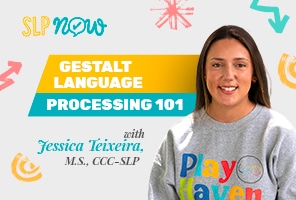

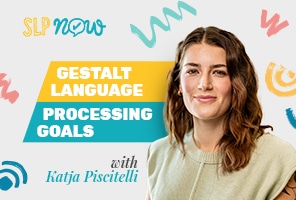
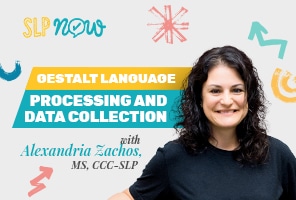
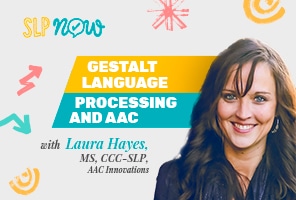

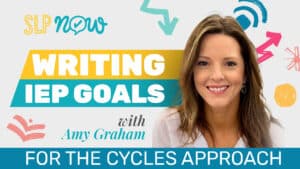

Leave a Reply